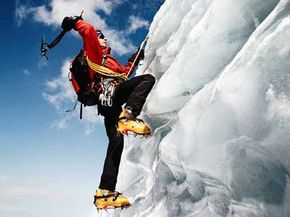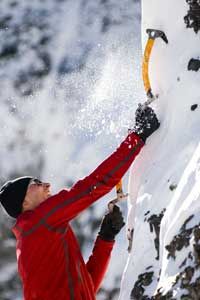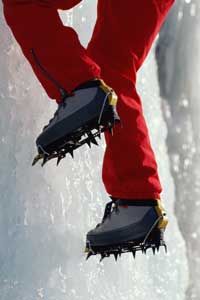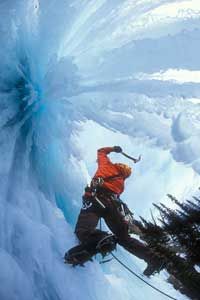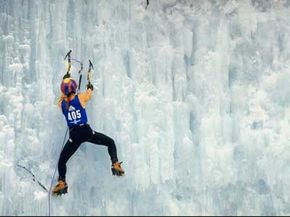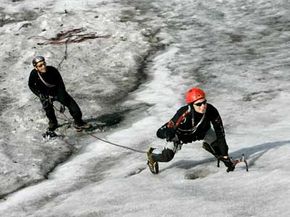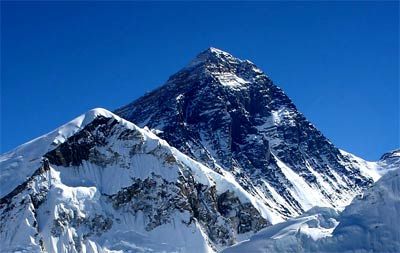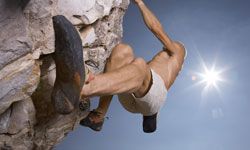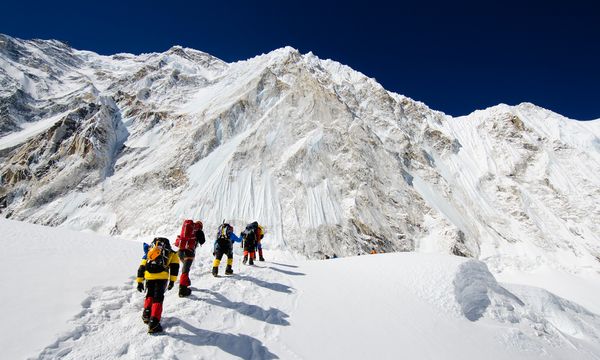For most people, getting up close and personal with ice means drinking a frosty beverage. The worst that could happen is brain freeze. But adventure junkies will spend hours, days even, with their faces flat against the side of a glacier or frozen waterfall, using picks and ropes to scale its slick, textured and treacherous surface. The thrill of danger -- Will I fall into an icy crevasse? Will I get frostbite? Will an avalanche come out of nowhere? -- is what makes ice climbers so passionate about their sport.
Ice climbing evolved out of rock climbing and other mountaineering activities. In high altitudes, rock climbers had to learn how to navigate icy and slippery areas as they worked their way up a mountain or rock wall. Eventually, climbers began to develop specialized tools and gear to get through those icy spots. Over time, climbers began to seek out strictly ice climbs.
Advertisement
You can trace the birth of ice climbing back to 1908, when a climber named Oscar Eckenstein designed toothed claws, called crampons, that fit into the bottom of his boot. These crampons allowed a climber to gain traction on the slippery ice. Before crampons were invented, ice climbers had to use step cutting, a laborious method of cutting foothold areas into the snow and ice with a pick or axe, to gain footing.
In the 1930s, climber Laurent Grivel made another significant advance. He added sharp fangs that jutted out in front of the crampons, which allowed climbers to navigate steeper ice. Then, in the 1960s, Yvon Chouinard, who went on to create the Patagonia clothing line, revolutionized the design of ice axes. First, he shortened the traditional 25-inch (63.5 cm) mountaineering axe down to 22 inches (55.8 cm). Next, he changed the shape of the traditional pick, which at that time was straight at a shallow angle to the axe's shaft. This shallow angle was fine for regular snow climbing, but wasn't effective on steeper snow and ice. His curved pick entered the ice more easily and was also easier to remove.
Today, a plethora of tools and safety gear make ice climbing accessible for almost anyone. You can take guided climbing lessons; you can do less strenuous ice climbs in the sun, or take on advanced multi-day steep climbs in sub-zero temperatures. With the right training, just about everybody can ice climb, as long as they're in excellent cardiovascular fitness and have a good strength-to-weight ratio. Experts recommend specific exercises to get your body ready for your first climb, including squats, deadlifts, overhead press, pull-ups, step-ups and dips [source: Parker].
What else will prepare you for an ice climb?
Advertisement
